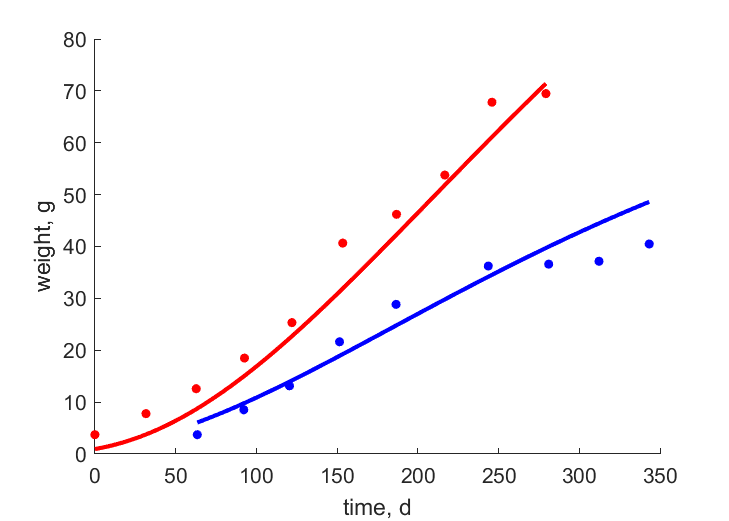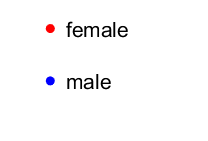Predictions & Data for this entry
| Model: std | climate: Aw | migrate: | phylum: |
| COMPLETE = 2.5 | ecozone: TN | food: biCi | class: |
| MRE = 0.108 | habitat: 0jFp, jiTf | gender: Dg | order: |
| SMSE = 0.027 | embryo: Fh | reprod: O | family: |
Zero-variate data
| Data | Observed | Predicted | (RE) | Unit | Description | Reference |
|---|---|---|---|---|---|---|
| ab | 1 | 6.173 | (5.173) | d | age at birth | Mill1985 |
| tj | 25 | 24.99 | (0.0003283) | d | time since birth at metam | Mill1985 |
| tp | 365 | 366 | (0.002703) | d | time since metam at puberty | Mill1985 |
| am | 3905 | 3902 | (0.001005) | d | life span | AnAge |
| Lb | 0.5 | 0.5055 | (0.01091) | cm | total length at birth | Mill1985 |
| Ljb | 3.5 | 2.711 | (0.2253) | cm | total length at metam tadpode | Mill1985 |
| Lj | 1 | 1.342 | (0.3424) | cm | total length at metam frog | Mill1985 |
| Lp | 13 | 12.95 | (0.00407) | cm | total length at puberty | Mill1985 |
| Li | 12 | 15.58 | (0.2985) | cm | ultimate SVL of female | EoL |
| Lim | 8.5 | 6.249 | (0.2649) | cm | ultimate SVL for male | EoL |
| Wwb | 0.05 | 0.04993 | (0.001412) | g | wet weight at birth | BrunBern2009 |
| Ri | 4.11 | 4.113 | (0.0008646) | #/d | maximum reprod rate | ADW |
Uni- and bivariate data
| Data | Figure | Independent variable | Dependent variable | (RE) | Reference |
|---|---|---|---|---|---|
| tW_f |   | time | weight | (0.1159) | Mill1985 |
| tW_m |   | time | weight | (0.1418) | Mill1985 |
Pseudo-data at Tref = 20°C
| Data | Generalised animal | Peltophryne lemur | Unit | Description |
|---|---|---|---|---|
| v | 0.02 | 0.0954 | cm/d | energy conductance |
| kap | 0.8 | 0.8579 | - | allocation fraction to soma |
| kap_R | 0.95 | 0.95 | - | reproduction efficiency |
| p_M | 18 | 69.25 | J/d.cm^3 | vol-spec som maint |
| k_J | 0.002 | 0.002 | 1/d | maturity maint rate coefficient |
| kap_G | 0.8 | 0.8015 | - | growth efficiency |
Discussion
- At metam, del_M and {p_Am} are assumed to change
- Males are assumed to differ from females by {p_Am}
- mod_1: males have equal state variables at b, compared to females
Bibliography